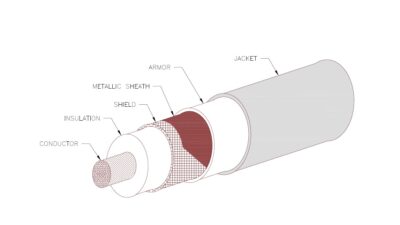Morrissey Goodale outlines three tough choices architecture and engineering (A/E) firm CEO's face daily.

Time and time again in our strategy and executive coaching work, we see CEOs navigating their own sets of perils at various times in their careers. Sometimes these potentially calamitous choices appear out of nowhere. More often than not, they can be viewed in the distance on the horizon but only become clear when getting closer—when your options for evasive action have been reduced to “Oh, that’s not very appealing” and “Yikes, that’s worse.” There is always a price to pay for the decision, and that price is paid by both you and your employees. But you never really know what that price is until you make the choice, and sometimes you don’t realize the full cost until a lot, lot later.
Here are some of those choices that we see CEOs wrestling with:
1. Should I stay or should I go? The existential conundrum of the 60-something-year-old CEO. He sure feels like he’s in his 30s and at the top of his game (“Plenty of gas in the tank!” “I’m in the gym six times a week—never felt better! Here, take a look at these abs!”) and all that. His firm is experiencing yet another record year of performance with two years of backlog (“that’s hard backlog, not soft, mind you”) in place. He and the firm have been winning accolades and awards left, right, and center—for his “leadership” and for being “a great place to work.” The serotonin and dopamine hits are flowing like it’s the encore set at a Taylor Swift Eras concert. It’s hard to walk away from “this.” Also (he tells himself) “nobody can do this job better than me. It’s the right thing for the firm that I continue to lead.” However, staying too long risks demoralizing or delaying the growth of the next generation (whether they are “ready”—what exactly does “ready” really mean?—or not).
It also increases the risk that when times—for the firm, for the industry, or both—get tough again (note for our younger readers: sometimes the economy goes into recession—Google it), that he’s still in charge but with little, if any, gas in the tank (or charge in his EV battery). On the other hand, leaving too soon—without doing all he can to set the table for his successor (addressing internal politics, sorting out executive team dynamics once and for all, confronting successor-specific blind spots)—even in the best of times can be a recipe for disaster. Stay (too long) or leave (too soon). There is no perfect time. And the timing will have implications and costs down the road. (This decision is best made listening to the classic 1981 Clash song of the same name.)
2. Holding back the years: This is the existential choice faced by many a second- or third-generation CEO. She must choose between the twin perils of how closely to hew to the past versus embracing a new, rapidly evolving economic and industry order. Whether to be guided by “the values that the firm was founded on” 40 years ago or by the cacophony of signals from clients and competition that the future is now and is tech-enabled and digitally driven and the last firm to embrace it is as dead as the dodo. Overvaluing the past, placing too much value on loyalty, promoting—and protecting—talent based on tenure rather than performance for sure preserves the “family culture” that so many managers and employees claim to love about their firm. “That’s why we have such low turnover!” But these traits also tend to foster complacency and avoidance of accountability, which inevitably leads to sub-optimal performance—which leads ultimately to collapse.
On the other hand, should she remake the firm for this brave new world? Invest in technologies that bring the firm to the leading edge? Throw out the well-meaning, underperforming boomers who talk more about “the good old days” than they do using generative AI to solve client problems (while being paid $300,000 plus bonus annually plus stock dividends)? Value performance over tenure? Vigorously embrace the new while violently jettisoning the old?
“We’re not a family, we’re a team.” Many a second- or third-generation CEO takes the reins only to find that the firm’s financials are in such dire condition (“Who put this deferred compensation plan in place?”) and the only choice is radical transformation. But the risks of changing the engines on the plane while you’re flying it are well documented. And in many cases, these CEOs find that their management teams lack the competencies or commitment to enact the changes necessary—in large part because the management team itself is responsible for the status quo and benefits from it monetarily. (This decision is best made listening to the 1985 Simply Red song of the same name.)
3. A capital idea: This is the choice that many an ENR 500 CEO faces in 2024. Whether to recapitalize with private equity or remain employee-owned. There’s no end in sight to the good times (Or is there?). Her employees cannot afford to (or don’t want to) buy out the current ownership. (They’re good people; they’re just not that into you or into buying your stock.) The value of her firm just keeps going up. And day after day after day, she receives unsolicited overtures from private equity. And regardless of whether they are from New York, Miami, London, Boston, Los Angeles or Chicago—the message seems eerily the same: “Let us be your partner. You know how to run an engineering firm. We don’t. We’ll be hands-off. Let us give you and your shareholder so many dollars in cash so that we can become your financial partner and help you make the acquisitions that you need to accelerate your growth in pursuit of your vision, thereby creating even greater wealth for all and improved services for more clients.”
What’s not to like? Seems like a surefire way to solve an ownership transition “problem” while at the same time buying a bigger boat than she was planning on. And with more and more of her peers making this choice each year, why not? Her team is finding it harder and harder to compete with the private equity backed competitors. On the other hand, this would mean giving up “pure” 100% employee ownership—something that has been at the heart of the firm’s makeup for… well, forever. Does she want to be known as the CEO who surrendered that? But what is the actual “value” of employee ownership? What if the new financial partner turns out to be less of a partner and more of a boss? But what if employee ownership does not allow her firm to meet its potential and a failed ownership transition plan results in a fire sale down the road? A perilous, perilous decision. What’s the right answer?
Today’s CEOs are leading their firms through the most exciting and turbulent of times. They have many choices to make. And plenty of the big choices may seem simple to make, but they are hardly ever easy.
– Morrissey Goodale is a CFE Media and Technology content partner.



